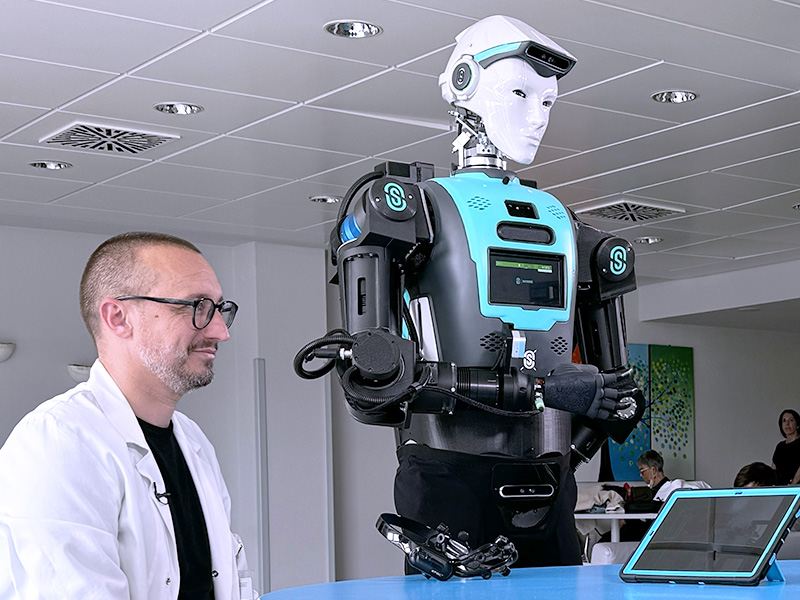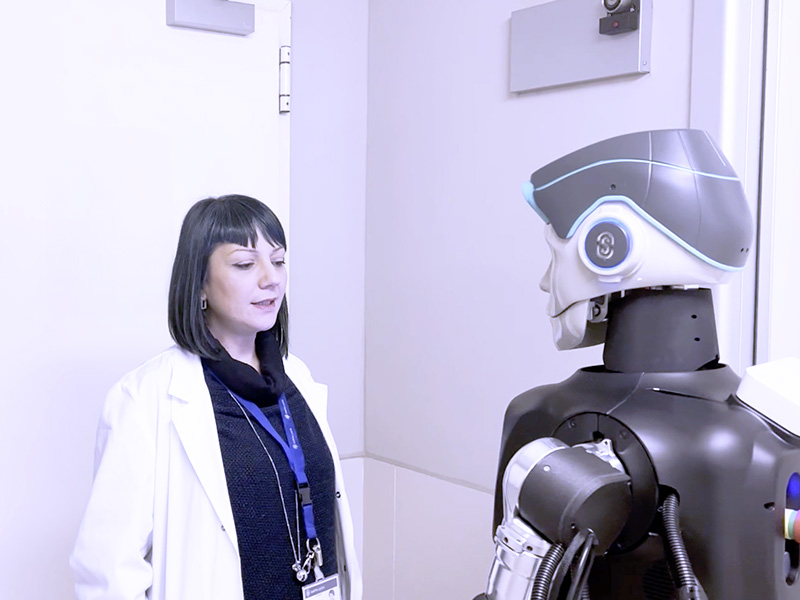The real-world testing of RoBee M in clinical environments, though controlled, has provided a unique opportunity to validate design choices and measure the impact of humanoid robotics on hospital routines and human interaction. Three key outcomes have emerged:
Seamless integration and autonomous navigation
RoBee M has proven capable of moving autonomously and safely within the complex and dynamic environment of a hospital ward. Its compact navigation base, coupled with advanced SLAM algorithms, enables precise movement through crowded corridors and consultation rooms without obstructing staff, patients, or equipment.
Trials demonstrated its ability to wait in congested passages, recalculate routes in real time, and respond to operator commands by autonomously reaching designated rooms or points of interest. This highlights both environmental awareness and adaptability — essential features for non-disruptive integration into daily hospital workflows.
Positive acceptance and natural interaction
Far from being perceived as intrusive, RoBee M has been welcomed by both patients and staff. Its reassuring design, slow and fluid movements, and calm voice contribute to a sense of safety and trust. Patients interact spontaneously without anxiety, while healthcare staff recognize the robot as a reliable tool rather than a substitute for human care.
An important factor in this acceptance is RoBee’s ability to recognize individuals visually, address them by name, and adapt dialogue accordingly. The system also manages permissions and access levels, ensuring that only authorized staff can request certain tasks or grant access to restricted areas — a safeguard essential for clinical environments.
Functional task execution and cognitive rehabilitation support
RoBee M has successfully performed specific functional tasks designed to enhance patient comfort, such as retrieving and delivering objects on request (e.g., bringing a blanket). These demonstrations validated its perception, picking, and manipulation systems, supported by anthropomorphic robotic hands for safe and empathetic interaction.
Most significantly, RoBee has shown itself to be an effective assistant in cognitive rehabilitation. Following protocols developed with clinical staff, the robot guided patients through exercises in memory, attention, and language, using its voice interface and a tablet for clear and engaging presentation. It monitored response times, collected performance data, and provided standardized feedback for medical evaluation — introducing a level of objectivity and repeatability not achievable with traditional methods.
RoBee M's technical specs





